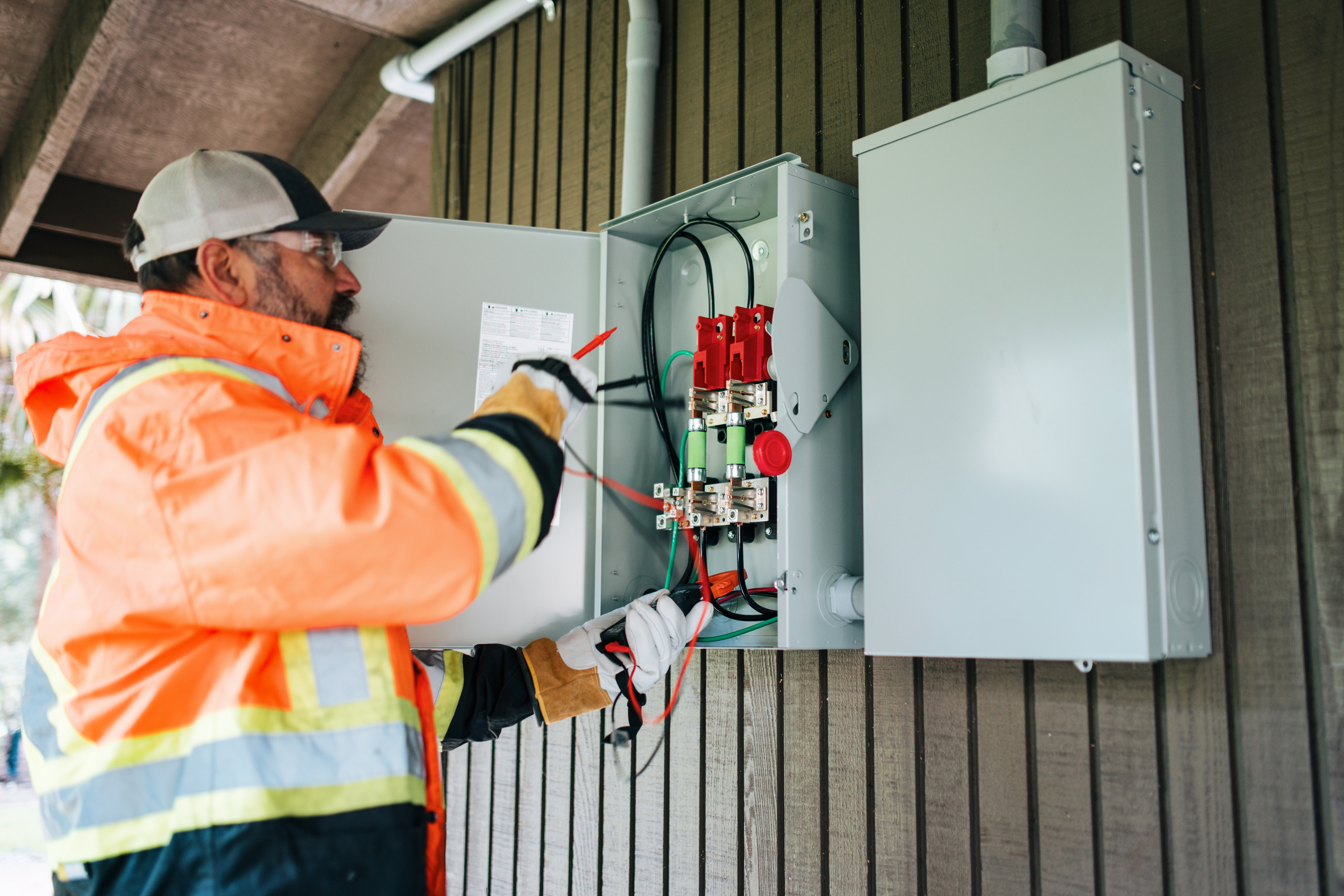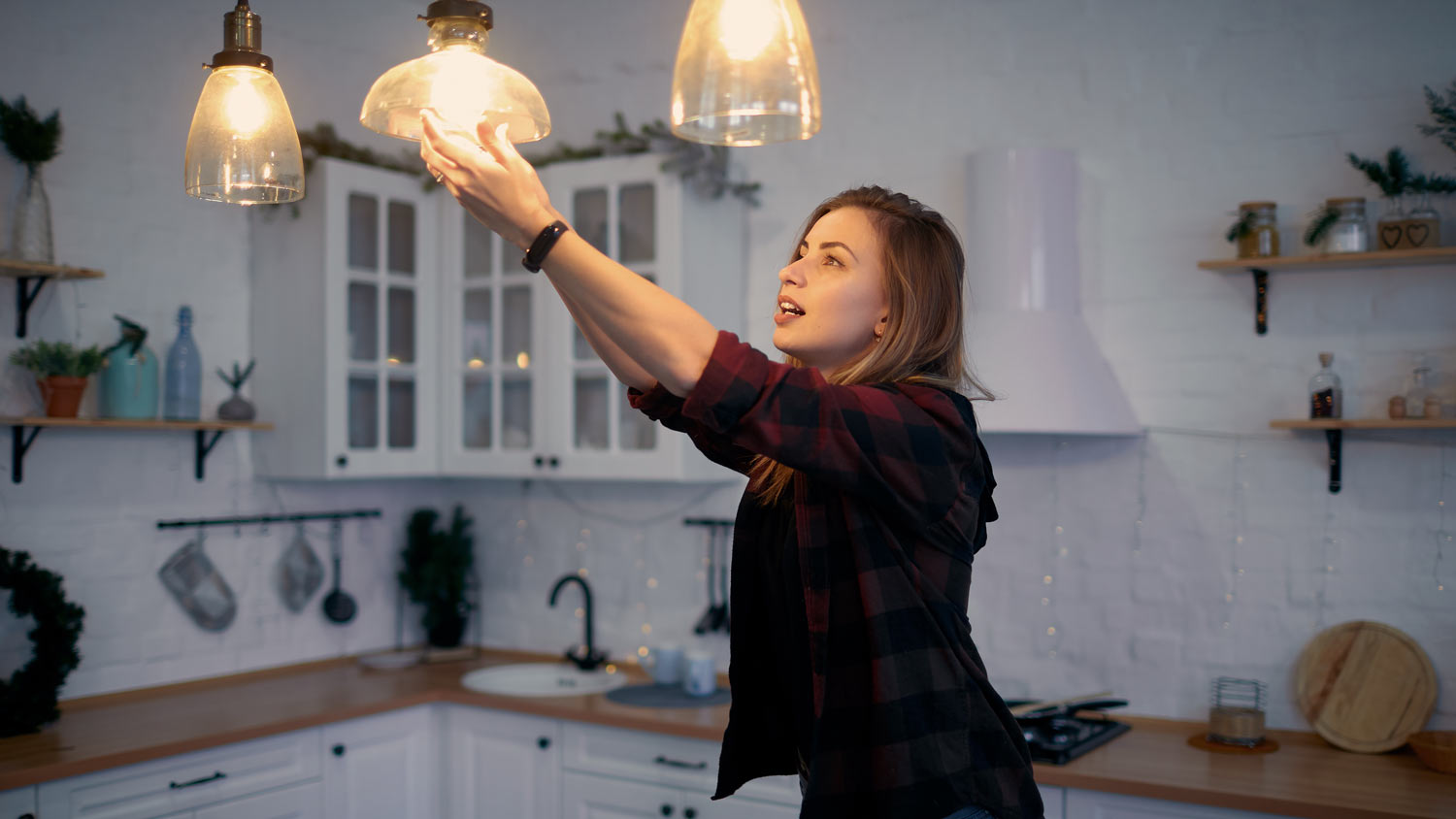
The average cost of electrical box replacement in San Francisco is higher than in other cities. Learn why you can expect to pay more out of pocket if you live in the Bay area.
This handy guide will shed some light on this oh-so-common lighting issue


Always hire a pro to make electrical repairs.
LED lights can flicker at the end of their lifespan.
Only certain lights work with dimmer switches.
The wattage of your lights must fall within the minimum and maximum dimmer wattage.
An overloaded circuit will make the lights flicker when an appliance turns on.
Dimmers can create a cozy ambiance, but most people aren’t exactly looking to install a strobe light in their living room. When lights start flickering, things can get a little bit annoying. Though LED bulbs are the most prone, other types of lighting (like halogen or incandescent bulbs) are not immune. This guide will help you determine why your dimmer light is flickering, what to do about it, and when it’s best to hire a professional.
Most LED lights last four to seven years with regular use. When LED light bulbs near the end of their lifespan, they may start to flicker. Some will flash on and off as they’re burning out, while others will slowly dim until they no longer emit light.
If your bulb is a few years old and nearing the end of its lifespan, changing the light bulb should stop the flickering.
Light bulbs can loosen from their socket over time. When the connection isn’t tight, your lights may flicker. This is especially noticeable with movement, like if you knock a hanging light or your lamp is on a table with uneven feet.
Turn the light off and twist the bulb to tighten it in the socket. If a loose bulb was the problem, the flickering will stop when you turn it back on.

Not every bulb is dimmable — especially if you're using LED lights. If the bulb isn’t dimmable, it will flicker and buzz when you try to dim it or just turn off completely. You may also notice flickering at the low end of the dimming range. Certain lights and fixtures are only designed to be dimmed a certain amount.
Even if the bulb is dimmable, your lights may flicker if the total wattage of the bulb (or all bulbs attached to the fixture) is higher than the maximum wattage rating of the dimmer switch.
There are two ways to fix a compatibility issue depending on the cause:
Replace the old bulb with a compatible bulb: Choose a bulb that’s rated for dimming and does not exceed the maximum wattage of your dimmer.
Adjust the low end dimming range: If your bulb only flickers at the low end of the dimming range, some dimmers allow you to make a manual adjustment. Follow the manufacturer’s instructions to reset the level so it’s above the point where your light starts to flicker.
If the wiring to your dimmer or light bulb is damaged or loose, it can cause flickering. This is especially common in older homes that may have old aluminum wiring. You should have it fixed ASAP. Wiring issues can be a fire risk.
Don’t DIY wiring. If you suspect there’s a problem with your wiring, call a licensed electrician.

Dimmer switches can wear down over time, and older dimmer switches may not be compatible with newer types of light bulbs. They’re typically designed for incandescent bulbs, not lower wattage LEDs. This won’t just cause flickering, it can shorten the lifespan of your bulb.
Install a new dimmer switch that’s compatible with modern light bulbs. If you use LED lights, make sure you choose a dimmer with a lower minimum wattage. The typical cost to replace a light switch is between $60 and $300.
If you notice your lights flickering when you turn on an energy-hungry appliance like a clothes dryer or air conditioner, you may have overloaded your circuit or electrical panel. This is common in older homes that didn’t evolve to accommodate modern appliances. You may notice issues like flickering lights, a tripped breaker, or voltage fluctuations (where power rushes to one circuit and decreases from other circuits).
You’ll have to hire an electrician to find the source of the problem, but there are two potential fixes:
For an overloaded circuit: If you have too many appliances wired into a single circuit, you’ll need to redistribute the appliances to different circuits or install a new one.
For an overloaded electrical panel: You can upgrade to a newer panel with higher amperage. Many homes have 100-amp panels, but you may need to get a 200-amp panel.
You can change or tighten a light bulb on your own, but if that doesn’t stop the flickering, it signals a deeper problem with your dimmer or electrical wiring. Unless you have a background with this type of work and deep knowledge of the safety protocols, never attempt to DIY your home’s electricity. It can be dangerous. A licensed local electrician will know how to accurately diagnose the problem and safely make a repair.
From average costs to expert advice, get all the answers you need to get your job done.

The average cost of electrical box replacement in San Francisco is higher than in other cities. Learn why you can expect to pay more out of pocket if you live in the Bay area.

How much does rewire house cost in San Francisco? Learn why you will pay more if you reside in this major city and if it can boost the value of your home.

How much does adding an electrical outlet cost in San Francisco? Explore installation costs, permit requirements, and factors influencing prices.

Learn a new skill and find out how to wire a light switch (safely) in your own home. This is one project that’s sure to light up your day.

Nothing’s more luxurious than your own hot tub after a long day. Maximize your enjoyment by hiring an electrician to wire your hot tub properly.

Do you need a lightning rod for your house? Lightning rods can be a handy weather safety tool, but not everyone needs them. See all the details here.